How to Check Optimum Catv Feed Strenght
Quick facts
Soil compaction concerns have been growing in Minnesota as both annual precipitation and farm equipment size have dramatically increased.
Wet soils are particularly susceptible to compaction. Heavy equipment and tillage implements amplify damage to the soil's structure, decreasing pore space and limiting soil and water volume even further.
Improving soil structure is the best defense against soil compaction. A well-structured soil holds and conducts the water, nutrients and air necessary for healthy plant root activity.
What is compaction?
Soil compaction occurs when soil particles are pressed together, reducing pore space between them (Figure 1). Heavily compacted soils contain few large pores, less total pore volume and, consequently, a greater density.
A compacted soil has a reduced rate of both water infiltration and drainage. This happens because large pores more effectively move water downward through the soil than smaller pores.
In addition, the exchange of gases slows down in compacted soils, causing an increase in the likelihood of aeration-related problems. Finally, while soil compaction increases soil strength – the ability of soil to resist being moved by an applied force – a compacted soil also means roots must exert greater force to penetrate the compacted layer.
Figure 1: Effects of compaction on pore space.
Soil compaction changes pore space size, distribution and soil strength. One way to quantify the change is by measuring the bulk density. As the pore space decreases within a soil, the bulk density increases. Soils with a higher percentage of clay and silt, which naturally have more pore space, have a lower bulk density than sandier soils.
Myths about soil compaction
There are two common, widespread myths about soil compaction:
- Freeze-thaw cycles will alleviate a majority of the soil compaction created by machinery.
- Whatever compaction Mother Nature doesn't take care of, deep tillage or subsoiling will.
|
Although soils in the Upper Midwest are subject to annual freeze-thaw cycles and freeze depths of three feet or more, only the top two to five inches will experience more than one freeze-thaw cycle per year.
The belief that freeze-thaw cycles loosen compacted soils may have developed years ago when compaction would have been relatively shallow. At that time, machinery weighed less and grass and deep-rooted legumes were grown in the crop rotation.
Combining heavy axle loads and wet soil conditions increase compaction's depth in the soil profile. For example, a load of 10 tons per axle or more on wet soils can extend compaction to depths of two feet or more. Because this is well below the depth of normal tillage, the compaction is more likely to persist compared to shallow compaction that can largely be removed by tillage.
However, compaction can be alleviated to a limited degree in excessively dry soils. In very dry soils, cracks will form in most Minnesota soils. Considered a natural tillage tool, these cracks will break up compaction, but only to the depth of the crack (Figure 2).
While deep tillage (greater than 18 inches) is capable of shattering hard pans created by wheel traffic, it hasn't been proven to increase yield consistently or for a long period of time.
In the Midwest, research results have shown few positive yield responses to subsoiling. When responses do occur, they're relatively small and variable. Predicting the effects of subsoiling is difficult and may be due to the following:
-
Soil differences
-
Degree of subsoil compaction
-
Soil moisture
-
Future traffic
-
Weather conditions
-
Crops grown
-
Tillage methods
Causes of compaction
There are several forces, natural and man-induced, that compact a soil (Figure 3). This force can be great, such as from a tractor, combine or tillage implement, or it can come from something as small as a raindrop. Listed below are causes of soil compaction.
This is certainly a natural cause of compaction, and we see it as a soil crust (usually less than 1/2 inch thick at the soil surface) that may prevent seedling emergence (Figure 4). Rotary hoeing can often alleviate this problem.
Continuous moldboard plowing or disking at the same depth will cause serious tillage pans (compacted layers) just below the depth of tillage in some soils. This tillage pan is generally relatively thin (1 to 2 inches thick), may not have a significant effect on crop production, and can be alleviated by varying depth of tillage over time or by special tillage operations.
Wheel traffic is without a doubt the major cause of soil compaction (Figure 5). With increasing farm size, there's often a limited window of time to get these operations done in a timely manner.
Tractor weights have increased from less than three tons in the 1940s to approximately 20 tons today for the big four-wheel-drive units. This is of special concern because spring planting is often done before the soil is dry enough to support the heavy planting equipment.
Minimal crop rotation
The trend towards a limited crop rotation has had two effects:
- Limiting different rooting systems and their beneficial effects on breaking subsoil compaction.
- Increased potential for compaction early in the cropping season, due to more tillage activity and field traffic.
How soil compaction affects plant growth
Soil compaction can have both desirable and undesirable effects on plant growth. Research from North America and Europe indicates that crops respond to soil compaction as shown in Figure 6.
Dry weather
In a dry year, at very low bulk densities, yields gradually increase with a slight increase in soil compaction.
A slightly compacted soil can speed up the rate of seed germination because it promotes good seed-to-soil contact. This is why corn planters have been specifically designed to provide moderate compaction with planter-mounted packer wheels that follow seed placement.
As soil compaction increases beyond optimum, yields begin to decline. In dry years, soil compaction can lead to stunted, drought-stressed plants due to decreased root growth. Without timely rains and well-placed fertilizers, yields will reduce.
Wet weather
In wet weather, yields decrease with any increase in compaction. Soil compaction in wet years decreases soil aeration, increasing denitrification. The risk of root diseases can also increase. All of these factors add stress to the crop and, ultimately, lead to yield loss.
Consequences of compaction
|
Under the influence of microbial activity, soil particles bind into generally stable units called aggregates (Figure 7). Heavy equipment and tillage implements can damage these and reduce soil structure.
Structure is an important defense against soil compaction. Without good structure, individual soil particles are more susceptible to compaction from external pressure. This increases bulk density and decreases pore space.
Heavily trafficked soils retain moisture longer, recharge more slowly and are slower to warm up compared to less-compacted soils (Figure 8).
Impact of deep tillage
In the Midwest, using deeper tillage implements in combination with disks, shanks and harrows destroys soil structure and loosens the soil to a depth of 10 to 16 inches. While this temporarily aerates the soil and lowers the bulk density, it can reduce seed-to-soil and root-to-soil contact.
The air that's been introduced into the soil doesn't have any load-bearing capacity and the soil can be easily compacted after tillage. Examples of slower germination and growth in wheel tracks have become more common (Figure 9).
When structure and pore space reduce, there's less air and moisture in the soil. This condition negatively influences all phases of crop production including seed germination, seedling emergence, root growth and nutrient and water uptake (Figure 10).
Soil compaction increases soil density. Roots are less able to penetrate the soil and are generally shallow and malformed.
Because their growth is restricted, they're less able to exploit the soil for nutrients and moisture. Nitrogen and potassium deficiencies are the most common (Figure 11). This leads to additional fertilizer requirement and increases production costs.
You can reduce the adverse effects of compaction by applying fertilizer in ways that improve plant root access. This may include split application of nitrogen or band application of phosphorus and potassium.
Research shows that increased vehicle traffic delays seedling emergence and that the emergence rate is more variable (Figure 12). While crop emergence from compacted soil may catch up to emergence from non-compacted soil, plants are at a higher risk for disease, predation and moisture shortage.
Researchers in Pennsylvania compared three levels of annual compaction, measuring corn population, plant height and yield:
-
Soil with no compaction.
-
Compaction from road tires inflated to 100 pounds per square inch (psi).
-
Compaction from flotation tires inflated to 36 psi.
The non-compacted plots had a higher plant population than the trafficked plots in two out of four years. Road tires resulted in lower plant counts than flotation tires (Figure 13) due in part to the road tires creating ruts across the field and greater surface unevenness after the compaction, resulting in poorer seeding depth control.
The study concluded that the compaction created from the higher psi decreased plant population versus no compaction.
Soil compaction can influence plant height by preventing normal root development. This is most detrimental if it's shallow compaction (6 to 8 inches).
If timely rains don't soften the compacted layers so roots can penetrate the soil, plants will be stunted, and have fewer fine roots and less overall root mass. Corn is most sensitive because it's one of the taller crops. By the end of the season, corn may be 6 inches to 2 feet shorter on compacted soil than on non-compacted soil (Figure 14).
Research has shown corn height was affected by soil compaction six weeks after planting and followed through to harvest (Table 1).
Annual road tire compaction reduced plant height by 21 percent at six weeks after planting and 11 percent at harvest compared to the control. Corn height on flotation tire plots was statistically the same as the non-compacted corn.
Table 1: Effects of soil compaction on corn height
Figure 15 shows a tillage pan that formed due to fall moldboard plowing when soil conditions were too wet. Notice the shallow rooting system that can lead to moisture stress, nutrient deficiencies and lodging.
While the current year's crop will be affected, it's unknown how long this layer will persist. This is a smectite clay, which is evident by the deep crack on the left side of the photo. The cracking of the clay soil and adequate moisture will lessen the tillage pan's severity.
Crop yields reduce when soil compaction decreases crop emergence, crop growth and nutrient uptake. Some researchers estimate soil compaction can reduce yield as much as 60 percent.
The ranges in yield effects are broad because compaction's outcome is variable and due to many factors. Compaction's effects aren't consistent across the field.
Study 1
Researchers found significant yield reductions with the annual road tire compaction compared to the control in three of the four years. However, yield differences between flotation tires and the control weren't significant in three of the four years.
This may be due to the corn plant's ability to compensate for fewer plants per acre with larger ears. They observed compaction has the greatest effect on yield when the crop is under stress, such as from drought or an excessively wet growing season.
Study 2
A study from Purdue University found that differences in stand count affected final yield in trafficked versus non-trafficked fields.
Wheel traffic plots had a higher number of ears produced, but the ears were smaller than the ears from the non-compacted plots (Figure 16). The relationship between final yield and wheel traffic was blurred by the corn plant's ability to produce larger ears when plant population reduces.
Study 3
Researchers at Purdue University observed stand count reductions of 20 to 30 percent in the compacted plots.
They also measured plant height decreases of one-third to one-half and yield reductions of about 19 percent compared to non-compacted plots. Corn yields were 160 bushels per acre in non-compacted soil compared to only 130 bushels in compacted plots.
Other studies
Research studies conducted in northern latitudes show the effect of severe subsoil compaction may affect crop yields for years. Research results from Lamberton and Waseca, Uppsala, Sweden and Quebec show a similar trend of initially lower yields following compaction with axle loads of 10 tons or more.
The effect decreased over time, and yields on compacted soil approach the yields on non-packed soil after two to seven years, depending on the soil and climate. Soils higher in clay content recovered more slowly from the effects of compaction.
While these studies show a gradual, natural alleviation of subsoil compaction, data from Waseca suggests there's sufficient "residual" subsoil compaction to reduce crop yields in years where there are environmental stresses.
Figure 17 shows corn yields were back to normal within five years after the compaction was created. However, yields in 1988, 1990 and 1993 were reduced. In 1988, growing season precipitation was the lowest on record, while in 1990 and 1993, the region received above average rainfall (167 and 175 percent of the long-term average).
This study illustrates a one-time compaction event can lead to reduced crop yields 12 years later. Under normal farming operations, heavy equipment is used every year. Subsoil compaction resulting from farming practices may be a long-term issue.
Most effects of compaction are detrimental to plant growth. However, there are a few exceptions. Slightly compacted soils in a dry year can increase crop yield as discussed earlier. Another exception is the case of iron deficiency in soybeans.
Iron deficiency chlorosis (IDC) has become an increasing problem in the western half of Minnesota and the eastern quarter of North Dakota. IDC is induced by a combination of factors such as high pH, salts and calcium carbonate levels. However, it's been observed that wheel tracks running through an area affected by IDC will have green, healthy soybeans (Figure 18).
Penetrometer readings in the green wheel tracks show an increased bulk density in the top 7 to 18 inches of soil versus the yellow, chlorotic areas (Figure 19). Decreased pore size in the wheel tracks lead to decreased soil aeration, which increases denitrification.
In addition, the compacted wheel tracks tend to shed water and have less total water than less-compacted soil between the tracks. This decreases bicarbonate solubility when soils are wet in the wheel tracks, also helping to decrease chlorosis.
How compaction helps fields with IDC
While compaction is usually detrimental to most Minnesota crops, it can benefit soybeans grown in areas prone to IDC in wet years, although this practice typically isn't promoted.
When fields show IDC symptoms early in the year, one of two things can happen. One is that as the field dries, water is pulled into the small pored tracks through capillary action, making the tracks more moist than between tracked areas. The result is more chlorotic wheel tracks than the between tracked areas.
However, most of the time, wheel tracks stay green throughout the growing season. Whether wheel tracks turn chlorotic or remain green is often the consequence of varietal tolerance to regional IDC soil factors.
Generally, the most effective management for IDC is variety selection or the addition of an in-furrow iron chelate. Additionally, there's been success with planting a companion crop, such as oats, to remove excess nitrogen.
Compacted soil requires more force and energy to accomplish tillage operations. In an experiment in Illinois, the energy requirements to prepare a seedbed were measured in a compacted and non-compacted soil.
The compacted soil caused a 10- to 16-fold increase in energy required at low speeds and a four to eight-fold increase at high speeds. The draft from the narrow chisel points increased from 70 pounds in non-compacted soil to 350 pounds in a compacted soil.
Strategies for reducing soil compaction
The best way to manage soil compaction is to prevent it from happening. The old adage of "stay off the field until it is fit to work" still applies.
However, the possible severe economic repercussions of delaying planting, harvesting or other operations may outweigh compaction damage or loss. The dilemma farmers face in a wet spring or fall isn't easy to resolve.
Since farmers need to be in the field in less-than-ideal soil moisture conditions, minimizing or controlling compaction is the next best management option. This includes reducing axle load, proper inflation and size of tires, and band-applying nutrients to maximize availability. Inflating tires to the proper air pressure will reduce surface compaction, while reducing axle loads will reduce depth of compaction.
Your soil is your most important resource when growing a healthy and profitable crop. Preventing soil compaction will
- Increase water infiltration and storage capacity
- Increase timeliness of field operations
- Decrease the stress on plant roots
- Decrease diseases potential
How to manage soil compaction
One of the most important factors for decreasing soil compaction potential is to stay off the soil when it's wet. Unfortunately, this isn't always possible, as it often limits field work opportunities. While compaction may not be eliminated, it should be managed.
|
In a normal year, as much as 90 percent of the field may be tracked by equipment (Figure 20). Controlled traffic restricts the amount of soil that's traveled on by using the same wheel tracks.
Seventy to 90 percent of the total plow layer compaction occurs on the first trip across the field. By controlling traffic, the tracked area will have a slightly deeper compaction but the soil between the tracks won't be compacted (Figure 21).
How to control traffic
Corn and soybean farmers who use GPS, ridge-till, strip-till or no-till can confine traffic between certain rows and avoid compacting the row area. This requires properly matching all machines, including combines, grain carts and manure-handling equipment to confine compaction to the same between-row areas.
Benefits of controlled traffic
There are occasional reports of adverse effects on plant growth where the wheel tracks are on both sides of the row, but even then, the damage is confined to certain rows. Benefits to controlled traffic, using permanent compacted lanes, are
- Improved tractor efficiency and floatation
- Less powerful machinery needed
- Improved timeliness of operations
Factors to consider when buying machinery
Converting machinery to controlled traffic isn't a simple change, but rather a transition that can take several years to complete (Figure 22). This is why you should consider controlled traffic in all major machinery buying decisions.
Tire selection is very important with controlled traffic because minimizing the amount of compacted area is crucial. Use taller, narrower tires.
If controlling all wheel traffic isn't feasible, control the heaviest equipment like the grain cart. The grain cart has the greatest potential to compact the soil due to its large carrying capacity ( (more than 2,000 bushels) and a single axle that carries the weight.
Minimizing compaction
Follow these tips when using a grain cart to minimize compaction
- Try to use the same paths across the field.
- Use the combine's previous wheel tracks when unloading the combine.
- After loading the grain cart, follow those tracks down the field and take the headlands back to the semi-truck or field entrance.
- Never diagonally cross the field. This will create multiple wheel track patterns at 80 percent compaction.
- If you can't park semi-trucks on the adjoining road, keep them on the headlands. Semis and gravity wagons may have a lower axle load, but the tire inflation in quite high.
Properly maintaining tire inflation rates and decreasing axle loads is another strategy for managing compaction.
Manage axle loads
Heavy axle loads and wet soil conditions will increase the depth of compaction in the soil profile. As loads increase beyond 10 tons per axle, the potential to compact the soil past the tillage layer also increases.
Large 500 horsepower (hp) tractors, full combines, slurry tankers and grain carts can weigh between 18 and 40 tons per axle. They can create compaction down to 2 to 3 feet, regardless of whether they're equipped with tracks or tires (Table 2, Figure 23). Keep axle loads under 10 tons to localize compaction in the top 6 to 10 inches.
Table 2: Approximate axle loads for field equipment
Tracks and duals have better flotation than single tires. If you can equip combines or grain carts with either of these choices, flotation would increase and allow the combine a few extra passes before getting stuck in the field.
To minimize compaction from the combine's weight, unload combines on the headlands or unload them more frequently.
Properly inflate tires
Total axle load, as well as contact pressure between the tire and soil, affects subsoil compaction. Historically, as equipment weight increases, tire size also increases. This avoids drastic increases in the tire's contact pressure – measured in pounds per square inch (psi) – on the soil surface.
Tractor experts agree there's no single, simpler way to improve tractor efficiency than to use the proper tire inflation pressure. Proper tire inflation not only improves tractor efficiency but can reduce the compaction's intensity from the tires.
When duals or triples are added to a tractor, it reduces the carrying load on each tire, reducing the necessary tire inflation rate. This also decreases the depth and intensity of the compaction.
To confirm proper tire pressures, check with your tire dealers or search online.
Any equipment, whether it has tracks or tires, can create compaction. Choosing equipment that creates the least amount of compaction depends on several factors.
Tractors
A parked tracked tractor exerts a ground pressure of approximately 4 to 8 psi depending on track width, length and tractor weight. This psi changes with the positioning of mid-wheel rollers, spring stiffness at attachment points, track stiffness, dynamic weight transfer when under drawbar load, etc. (Figure 24).
Radial tires exert a pressure one to two pounds higher than their proper inflation pressure. For example, if a radial tire is inflated to 6 psi, the tire exerts a pressure of 7 to 8 psi on the soil. This pressure also depends on lug size, tire stiffness and drawbar load.
Older style bias-ply tires inflated to only 6 to 8 psi can't efficiently operate and easily wear out with such low tire pressure. Consequently, they must be inflated to 20 to 25 psi.
How to manage soil compaction
To keep soil compaction in the plow zone, maintain radial tire pressures around 10 psi. Depending on tire size, you may have to add duals to achieve this goal. Check with your local tire dealer to find the proper inflation pressure for your tires.
Research: Tractor compaction
Iowa research has shown that small tractors equipped with either tracks or radial tires create compaction in the top 5 to 8 inches. However, compaction effects were negligible below that depth.
Figure 25 shows the correlation between tire inflation pressures and soil compaction in a study conducted by Ohio State University. The compaction effect was measured to a depth of 20 inches on a silty loam soil (the tires were approximately 28 inches wide) for four different scenarios. They compared
- A John Deere 8870 tractor with 710/70R38 duals correctly inflated to 6 and 7 psi (front and rear)
- The same John Deere tractor with tires over inflated to 24 psi
- Cat Challenger 65 with 24-inch rubber track
- Cat Challenger 75 with 36-inch rubber tracks
In terms of soil physical properties, the tractor with correctly inflated tires ranked as the best, followed very closely by the 36-inch tracks and 24-inch tracks. The tractor with over inflated tires caused the most compaction. Relative rankings were the same for the vehicles with no load and a towed load (40-foot field cultivator).
Combines
The total axle load for heavy field equipment, such as grain carts or combines, is nearly the same regardless of whether the equipment uses tracks or tires. Tracks improve traction and ride-ability in the field, but a 25 ton per axle grain cart will still create subsurface compaction whether it has tracks or tires.
Research: Combine compaction
Another Ohio research project tested a 1200-bushel grain cart against a John Deere 9600 combine with different tire-track arrangements. The grain cart dual tires, by far, caused the worst compaction. Results (Figure 26), from worst to least compaction, were:
-
Grain cart dual tires.
-
The combine with single 30.5L32 tires at 34 psi.
-
The combine with a half-track system with an average psi of 10.
-
The combine with dual 18.4R38 tires at 26 psi.
-
The combine with wide 68x50.0-32 tires overinflated at 24 psi.
-
The combine with the same wide tires at the correct pressure of 15 psi.
Note the half-track had an average calculated pressure on the soil of about 10 psi, but it gave results that appear to make it equal to a tire with about 26 to 30 psi. This is mainly due to the downward pressures exerted from the guide wheels. Researchers hypothesized that the lower the inflation pressure, the better it is for soil porosity.
Grain carts and liquid manure spreaders
Like combines, grain carts' and liquid manure spreaders' overall carrying capacity is enormous and axle loads can be as high as 40 tons. Previously, heavy equipment used older-style bias-ply tires that need very high inflation pressures to effectively operate.
The tire industry has designed radial tires to replace bias ply tires for the larger equipment. This helped reduce tire pressures to almost half the inflation rate of bias-ply tires. Liquid manure spreader manufacturers have been adding more axles as the tank load increases, reducing load per axle (Figure 27).
Effect on roadway pavement
Another rarely mentioned aspect of equipment load is the effect axle load has on road stability. The following table compares the stress on pavement created by a variety of heavy farm vehicles.
The number of passes to failure indicates some vehicle types shorten the life of road pavement with significantly fewer passes.
Table 3: How different axle loads affect pavement wear
*Note: Structurally equivalent asphalt concrete pavements have similar impacts.
Notice that the loaded, 875-bushel grain cart can make the pavement unstable in less than 30 trips. If the same load was transferred to a 7-axle semi-truck, it would take 175,000 passes for pavement failure. If this is what's happening to the roads, imagine what happens to soils.
-
Abu-Hamdeh, N.H., Carpenter, T.G., Wood, R.K., & Holmes, R.G. (1995). Soil compaction of 4 wheel drive and tracked tractors under various draft loads (SAE Technical Paper #952098).
-
Abu-Hamdeh, N.H., Carpenter, T.G., Wood, R.K., & Holmes, R.G. (1995). Combine tractive devices: Effects on soil compaction (SAE Technical Paper #952159).
-
Daum, D.R. & Shipp, R.F. (2004). Agricultural soil compaction – causes, effects, and cures (Penn State University publication B-79).
-
DeJong-Hughes, J.M., Swan, J.B., Moncrief, J.F., & Voorhees, W.B. (2001). Soil compaction: Causes, effects and control (revision). (University of Minnesota Extension BU-3115-E).
-
Krmenec, A.J. (2000). Vehicle traffic and soil compaction. Midwest Farm Progress Show, IL.
-
Reichenberger, L. (2002). Harnessing all your horsepower. Successful Farming, March 2002 edition, 34-38.
-
Sidhu, D., & Duiker, S.W. (2006). Soil compaction in conservation tillage: Crop impacts. Agronomy Journal, 98(1), 257-1,264.
-
Soane, B.D., & van Ouwerkerk, C. (1994). Chapter 12. Soil compaction in crop production (pp. 265-286).
-
Voorhees, W.B., Nelson, W.W., & Randall, G.W. (1986). Extent and persistence of subsoil compaction caused by heavy axle loads. Soil Science Society of America Journal, 50, 428-433.
-
Voorhees, W.B., Senst, C.G., & Nelson, W.W. (1978). Compaction and soil structure modification by wheel traffic in the Northern Corn Belt. Soil Science Society of America Journal, 42, 344-349.
-
Wolkowski, R., & Lowery, B. (2008). Soil Compaction: causes, concerns, and cures (University of Wisconsin Extension publication #A3367).
Acknowledgements
The author wishes to thank Dr. Dave Franzen and Dr. Joe Pikel for their constructive comments when reviewing this publication.
Reviewed in 2018
mcwilliamswhimeldreved.blogspot.com
Source: https://extension.umn.edu/soil-management-and-health/soil-compaction
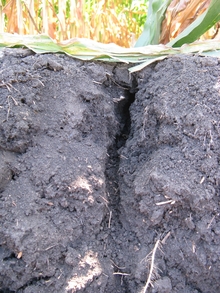






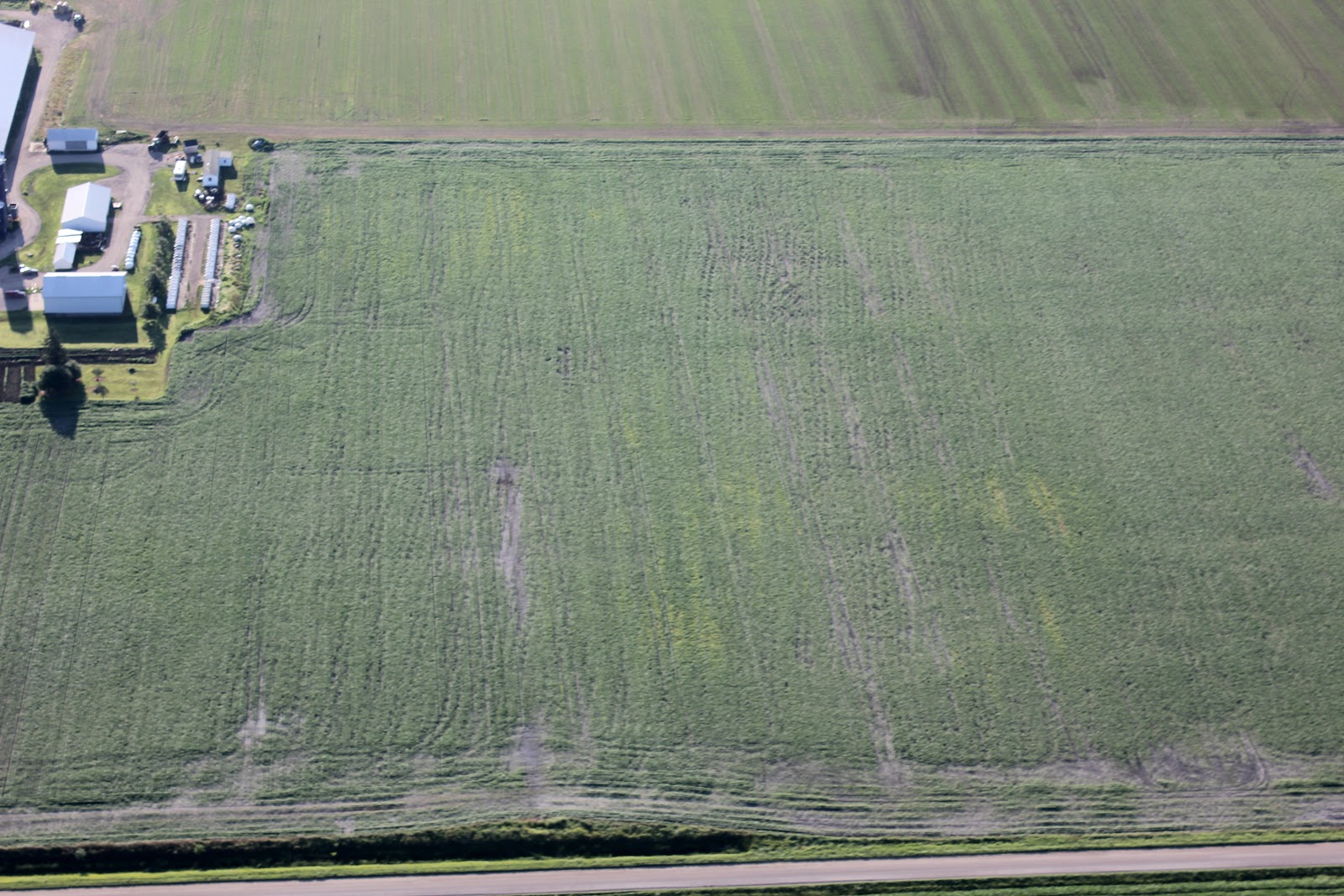
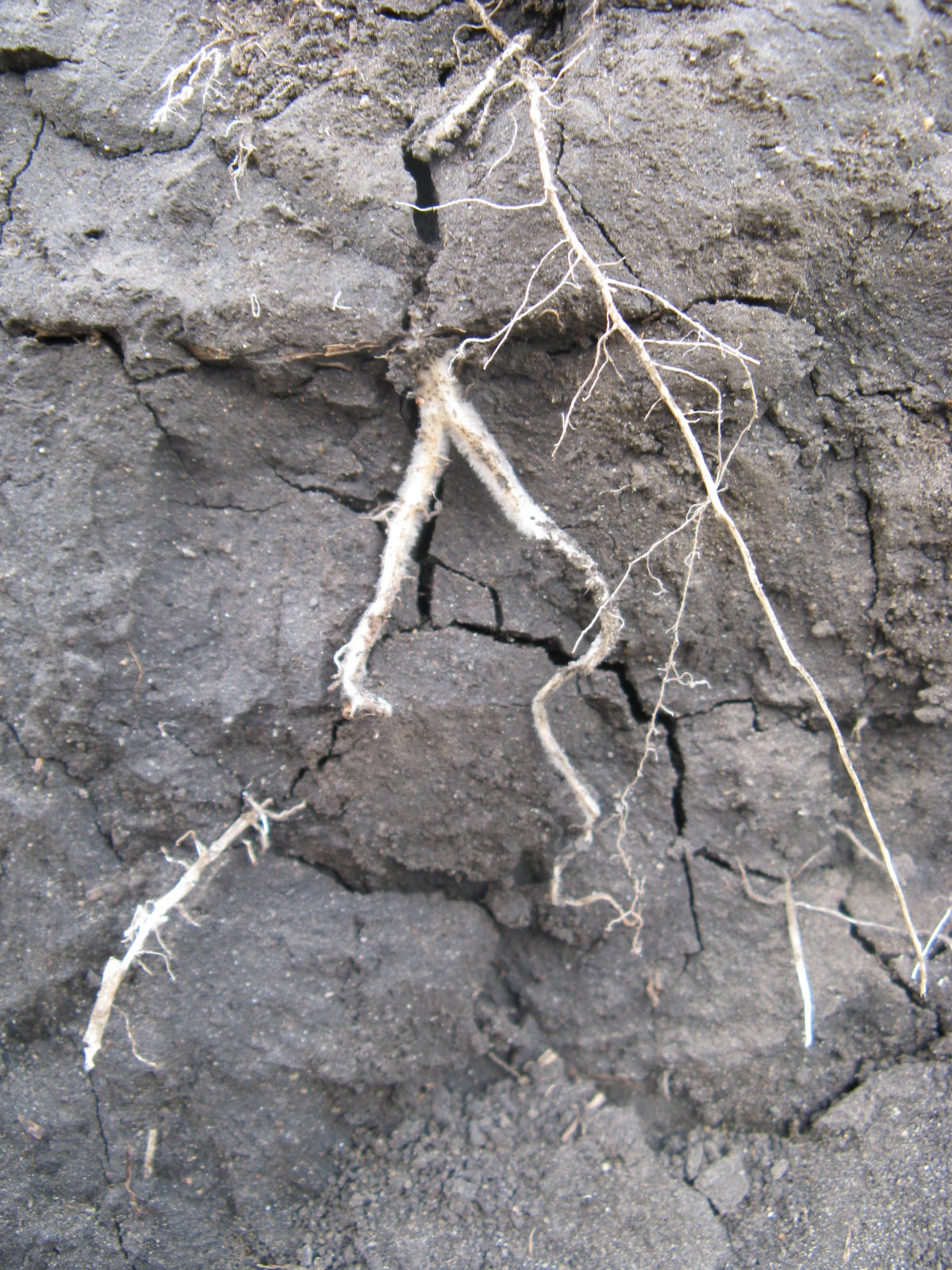
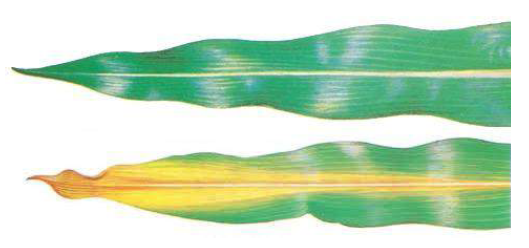
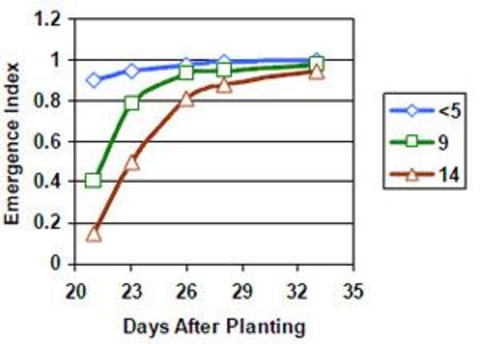
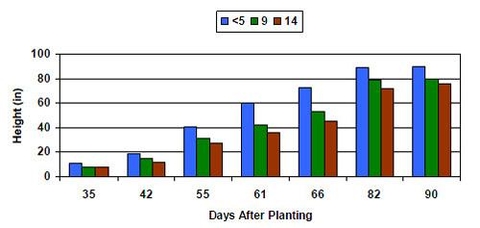
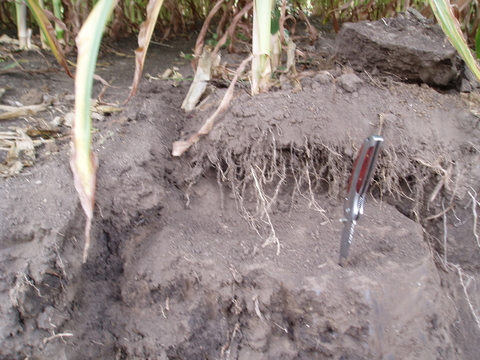


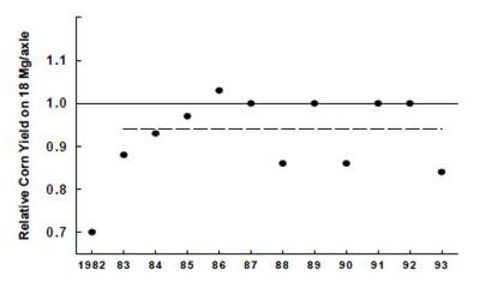
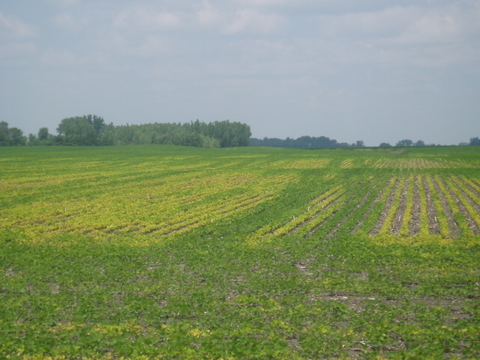
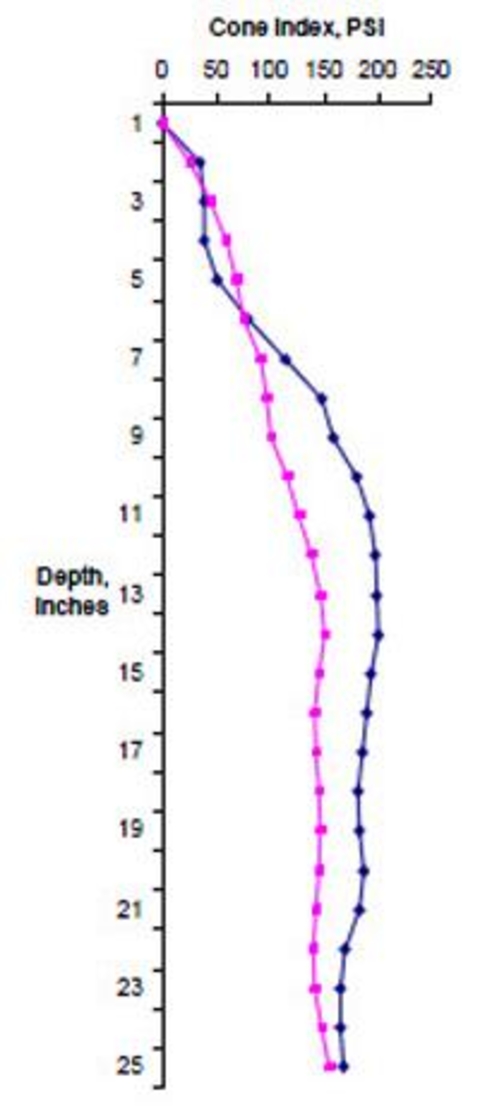
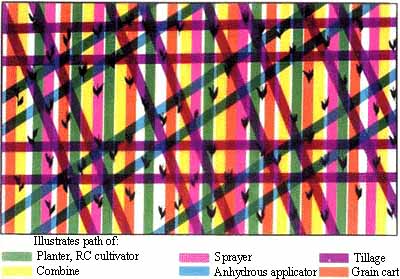

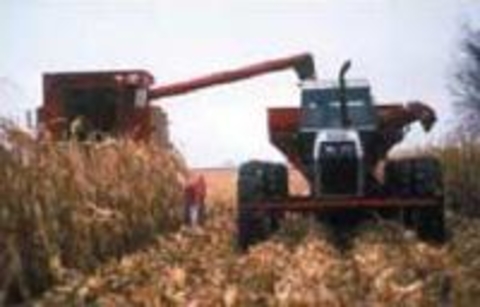


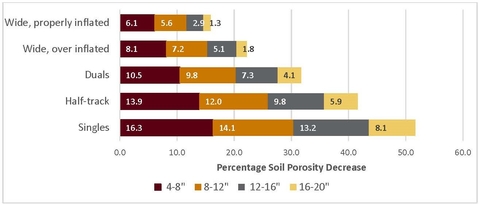
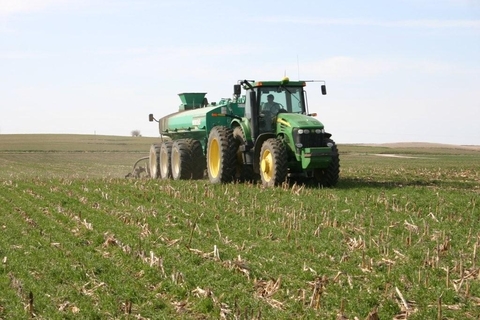
0 Response to "How to Check Optimum Catv Feed Strenght"
Enregistrer un commentaire